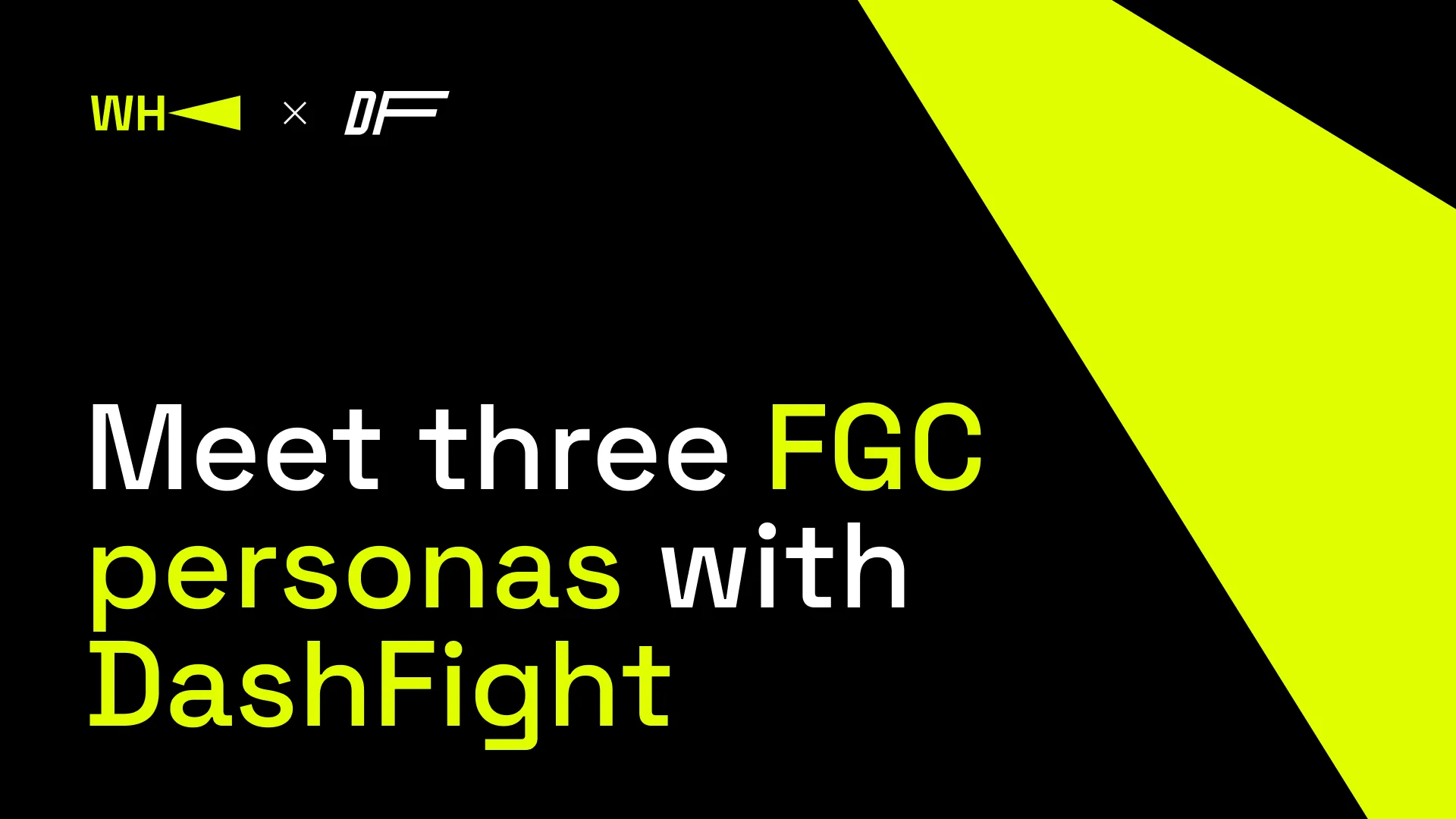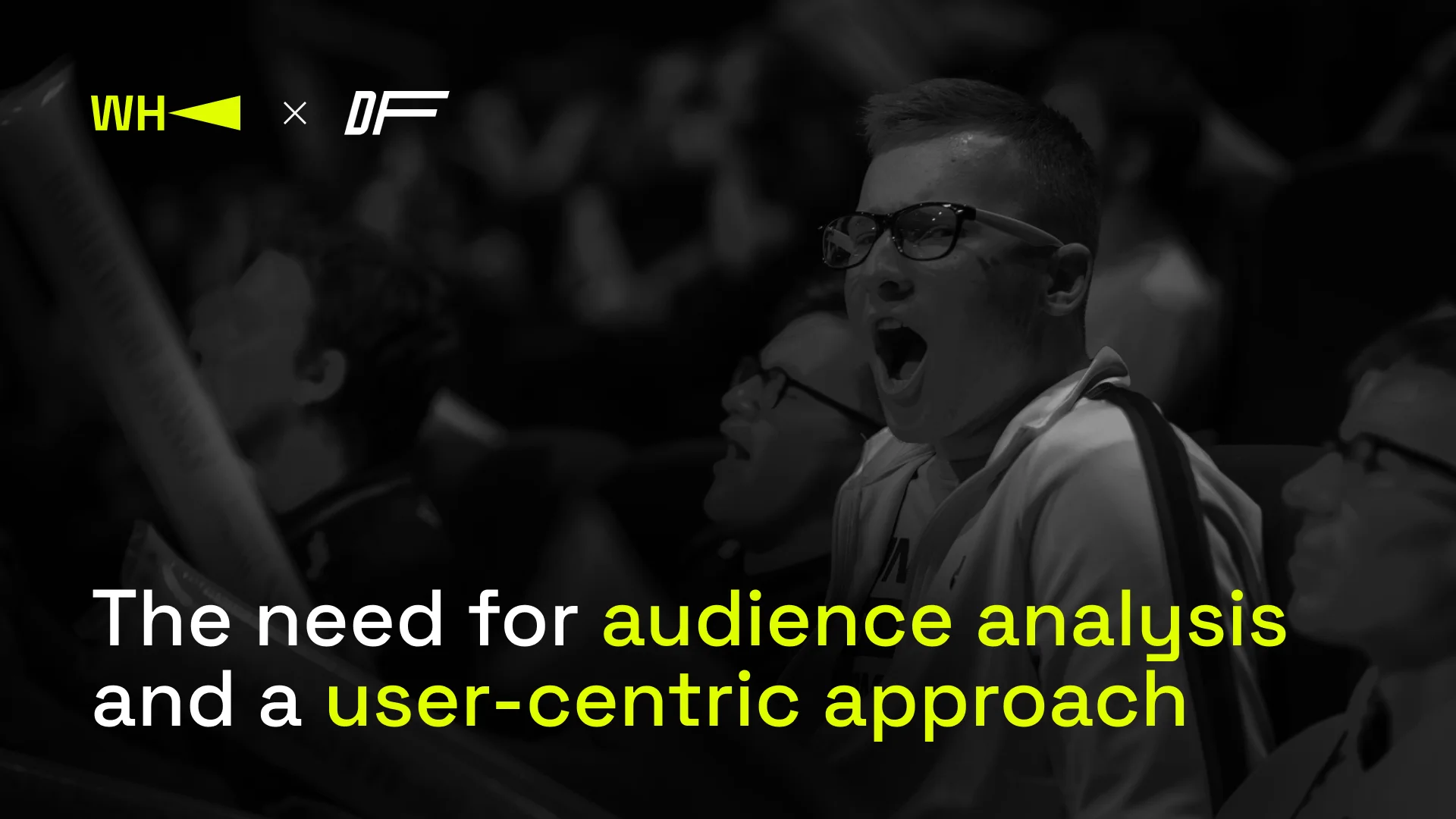Feb. 9, 2024
Meet three FGC personas with DashFight

4 min read
The fighting game industry and community are heterogeneous. Fightings are games for teenagers and the older generation alike. Franchises such as Mortal Kombat or Street Fighter have become an integral part of growing up for more than one generation.
Fighting games are for users of different consoles and devices, people of different ages, income levels, geography, and so on. However, this is not to say that the industry does not have a target audience; it is just not so obvious. To identify it, each brand that wants to work in the fighting game industry needs to do its own research.
A close-up of our fans
My mission as the Head of Product at DashFightis to create a compelling gaming experience for gamers, and the easiest and most reliable way to do it is to start by talking to the fans themselves. Everyone approaches audience research differently. The DashFight study had three stages. The team that worked on this research included Lead Product Designer Oleksandr Petrov, UX Product Writer Olena Kolesnyk, and myself.
First, we came up with the initial personas and analyzed the competitive environment and user behavior. Then, while I was serving as a Product Designer, we moved on to the interview stage to test all of our hypotheses. And finally, after I transitioned to the role of Head of Product in 2022, we decided on the following three personas:
- Casual player. Their main reason for gaming is entertainment and pure joy. So, a casual player is a gamer who likes to spend their free time chilling out with friends and playing games together. They have no plans to hone their skills to reach perfection but master old but gold combos to outplay their peers.
- Competitive player. The competitive nature of games is bait for many users — this one seeks ongoing improvement. Competitive players perfect their skills by playing against better and more experienced ones and plunging into details such as strategies, matchups, and frame data. They need detailed and up-to-date content to stay in the loop.
- Spectator. They are active participants of the FGC (Fighting Games Community). Spectators are either players or just watch what their heart tells them to. The spectacle of the gaming community, dynamic commentary, thrilling moments, and VODs content are the most straightforward ways to win their loyalty.
Identifying people and their pains is just the beginning of strategy. To realize the full benefits of spending resources on research, you need to understand how to satisfy the audience’s demands. We have developed experience maps, such as customer journey maps and emotional journey maps for each persona. Harnessing the information gained, we connected more deeply with our fans and offered them a product that was right for them.
The need for audience analysis and a user-centric approach
The DashFight team conducted this research by analyzing and interviewing our users and fans. However, I recommend that every brand that wants to work in the fighting game industry do its own research to meet the exact needs of its audience and follow a user-centered approach.
Working with users is an integral part of DashFight. Ongoing Discord interactions and research cycles that begin with the idea of usability testing through to post-launch analytics make sure we are in contact with our audience. It is important to keep on top of the trends in the rapidly changing world of fighting game media. Knowing that, for instance, interactive content, real-time engagement, or immersive storytelling are trending at a given moment is vital in designing an engaging experience for the user.
We use metrics as our guide, taking into consideration decisions and pinpointing improvement areas. Various metrics, including Monthly Active Users (MAU), User Retention, and Bounce Rate play a critical role in determining DashFight’s future. The way we have worked with our data-driven approach and user mission-driven initiatives has seen our MAU figure double in a year.
The combination of research, analytics, and user-centered product design is the cornerstone of reforming the FGC landscape. Our DashFight journey reflects our efforts to understand the community we serve and develop together with it. With ever more boundaries broken and the User Experience improved with each iteration, research and design in this dynamic field must never be undervalued. Every interaction is a smashing game that has to serve and exceed user expectations.
